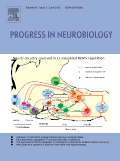
INTERNATIONAL JOURNAL OF DEVELOPMENTAL NEUROSCIENCE
Scope & Guideline
Driving Knowledge in Developmental Biology and Neuroscience
Introduction
Aims and Scopes
- Neurodevelopmental Disorders:
The journal emphasizes research on various neurodevelopmental disorders such as autism spectrum disorder, ADHD, and developmental delays, exploring their etiology, pathology, and treatment approaches. - Behavioral and Cognitive Neuroscience:
A core focus lies on the intersection of behavior, cognition, and neurobiology, investigating how developmental factors influence cognitive functions and behavioral outcomes in children and adolescents. - Molecular and Genetic Mechanisms:
Research on genetic variants and molecular pathways related to neurodevelopment is a significant theme, providing insights into the genetic predispositions and biochemical processes affecting brain development. - Environmental Influences on Development:
The journal includes studies examining how environmental factors, such as maternal health, nutrition, and exposure to toxins, affect neurodevelopment and contribute to behavioral and cognitive disorders. - Animal Models of Neurodevelopment:
Utilization of animal models to study neurodevelopmental processes and the effects of various interventions is a prevalent methodology, allowing for controlled experimentation and mechanistic insights.
Trending and Emerging
- Neuroimmunology and Inflammation:
There is a rising interest in understanding the role of neuroinflammation and immune responses in developmental disorders, highlighting the importance of the immune system in brain development and function. - Technological Advances in Neuroscience:
Emerging methodologies, such as advanced neuroimaging techniques and brain-computer interfaces, are becoming increasingly prominent, allowing for more sophisticated analyses of brain function and structure. - Impact of Early Life Stressors:
Research focusing on the long-term effects of early life stressors, including maternal health and environmental factors, on neurodevelopment and behavior is gaining traction, emphasizing the importance of early interventions. - Interdisciplinary Approaches:
There is a growing trend towards interdisciplinary research that combines insights from genetics, psychology, and environmental sciences to provide a more comprehensive understanding of neurodevelopmental processes. - Focus on Gut-Brain Axis:
Emerging studies exploring the gut-brain connection and its implications for neurodevelopmental disorders are gaining prominence, reflecting a broader interest in how microbiota can influence neurological health.
Declining or Waning
- Traditional Pharmacological Interventions:
Research focusing solely on traditional pharmacological treatments for neurodevelopmental disorders has seen a decrease, possibly due to a growing interest in alternative therapies and holistic approaches. - Static Neuroanatomical Studies:
There is a noticeable reduction in studies that only describe static neuroanatomical changes without linking these changes to behavioral or cognitive outcomes, as the field moves towards more integrative approaches. - Generalized Neurodevelopmental Assessments:
The use of generalized assessment tools without specific contextual or individualized analysis has declined, as researchers are increasingly focusing on personalized approaches and specific biomarkers.
Similar Journals

Brain Communications
Exploring the Frontiers of Brain ResearchBrain Communications is an esteemed, open-access academic journal published by Oxford University Press since 2019, focusing on the dynamic field of neuroscience. With a dedicated ISSN and an E-ISSN of 2632-1297, this journal aims to address the intricate relationships between brain functions, psychiatric disorders, and neurobiological mechanisms. The journal stands out in the academic realm, holding a prestigious Q1 ranking across several categories, including Biological Psychiatry, Cellular and Molecular Neuroscience, Neurology, and Psychiatry and Mental Health for 2023. Notably, it has also secured impressive Scopus ranks in various neuroscience and psychiatry fields, evidencing its commitment to high-quality research. With an impact factor reflective of its growing influence, Brain Communications provides accessible research findings to professionals, researchers, and students alike, fostering a deeper understanding of complex neurological phenomena. This innovative journal is pivotal for anyone involved in advancing knowledge in neuroscience and mental health.

Journal of Behavioral Education
Elevating Educational Outcomes with Behavioral ScienceThe Journal of Behavioral Education, published by SPRINGER, is a prestigious academic journal that serves as a vital resource for researchers and practitioners in the fields of developmental and educational psychology. Established in 1991, this journal has consistently contributed to the understanding of behavioral education through innovative research, theories, and practices. With an impressive Q1 ranking in Education and a Q2 ranking in Developmental and Educational Psychology, it is recognized for its significant impact, achieving a percentile rank of 78th in Social Sciences (Education) and 67th in Psychology. While the journal does not currently offer open access options, it is committed to disseminating high-quality studies that advance educational practices and enhance learning outcomes. The Journal of Behavioral Education is an essential publication for anyone dedicated to advancing knowledge in educational psychology and behavioral interventions.

PHYSIOLOGY & BEHAVIOR
Transforming Insights into Biological and Behavioral DynamicsPHYSIOLOGY & BEHAVIOR, published by Pergamon-Elsevier Science Ltd, is a premier journal that has been illuminating the intersections of physiological and behavioral research since its inception in 1966. With a promising impact reflected in its 2023 category quartiles— ranking Q2 in both Behavioral Neuroscience and Experimental and Cognitive Psychology, and a prior Q1 in Philosophy—this journal stands at the forefront of multidisciplinary research. It holds respectable ranks within the Scopus database, placing 27th out of 165 in Experimental Psychology and 25th out of 88 in Behavioral Neuroscience, highlighting its significant contribution to the academic community. The journal encourages the dissemination of high-quality research objectives that explore the intricate connections between behavior and biological processes, making it a vital resource for researchers, professionals, and students alike. Although access is not currently open, the journal continues to provide deep insights into crucial developments in its field, ensuring its readers stay updated on the latest scientific advancements.

PROGRESS IN NEUROBIOLOGY
Illuminating the Path of Neurobiological ResearchPROGRESS IN NEUROBIOLOGY is a prestigious journal dedicated to advancing the field of neuroscience, published by Pergamon-Elsevier Science Ltd. With an impressive impact factor, it stands as a critical resource for researchers, professionals, and students alike, featuring rigorous peer-reviewed articles that explore the latest developments in neurobiology. The journal has established itself as a leading publication, ranked in the Q1 category for Neuroscience (miscellaneous) and holding a notable 13/113 rank in General Neuroscience per Scopus metrics, placing it in the top 12% of its field. Since its inception in 1959, PROGRESS IN NEUROBIOLOGY has covered a wide array of topics, from molecular mechanisms to cognitive processes, fostering a comprehensive understanding of brain functions. While the journal is not open access, it ensures accessibility to profound knowledge through institutional subscriptions. Researchers and scholars will find critical analyses and innovative research that are pivotal for both foundational knowledge and cutting-edge investigations in the neuroscience realm.

Review Journal of Autism and Developmental Disorders
Bridging disciplines for a comprehensive understanding.Review Journal of Autism and Developmental Disorders, published by Springer Heidelberg, stands as a leading platform for the dissemination of groundbreaking research in the realm of autism and developmental disorders. With an ISSN of 2195-7177 and an E-ISSN of 2195-7185, this journal not only showcases high-quality research but also emphasizes the crucial intersections between behavioral neuroscience, cognitive neuroscience, developmental neuroscience, and psychiatry. Notably, the journal has achieved a prestigious Q1 ranking across these categories, reflecting its impact and relevance; it ranks 10th in behavioral neuroscience and 5th in developmental neuroscience within Scopus metrics. Spanning from 2014 to 2024, the journal is dedicated to fostering a deeper understanding of autism spectrum disorders and related conditions, making it indispensable for researchers, clinicians, and students alike. While it operates under a traditional access model, the quality of the peer-reviewed articles ensures that it remains a valuable resource in the academic community.

NEUROBIOLOGY OF LEARNING AND MEMORY
Advancing Understanding in Learning and Memory MechanismsNeurobiology of Learning and Memory is a prestigious journal dedicated to the exploration of the neural mechanisms underlying learning and memory processes. Published by Academic Press Inc Elsevier Science, this journal boasts a strong reputation within the field, as evidenced by its impressive impact factor and high quartile rankings in multiple categories, including Q1 in Behavioral Neuroscience and Q2 in Cognitive Neuroscience. Having provided a platform for groundbreaking research since its inception in 1995, the journal aims to disseminate influential findings that further our understanding of cognitive processes, shaped by robust empirical studies and theoretical developments. Researchers and professionals in neuroscience, psychology, and related disciplines will find invaluable insights and advancements that underscore the journal's commitment to fostering knowledge and innovation within these fields. While it currently operates under a subscription model, its comprehensive coverage of crucial topics positions it as a vital resource for those engaged in the intricate study of learning and memory.

Behavioral and Brain Functions
Pioneering Research in Behavioral NeuroscienceBehavioral and Brain Functions is a leading Open Access journal published by BMC, dedicated to advancing the field of behavioral neuroscience, cognitive neuroscience, and biological psychiatry since its inception in 2005. This esteemed journal, based in the United Kingdom, has established itself as a vital resource for researchers and professionals, boasting a remarkable influence demonstrated by its Q1 and Q2 rankings across multiple relevant categories. With its commitment to providing unrestricted access to high-quality research, the journal facilitates the dissemination of significant findings in understanding the complex interactions between behavior and brain function. The journal ranks impressively within the Scopus database, positioning itself among the top-tier publications in its categories, making it an essential platform for academic discourse and innovation. As it converges through 2024, Behavioral and Brain Functions continues to play a crucial role in shaping the forefront of neuroscientific inquiry, inviting contributions that challenge our understanding and promote further exploration in these dynamic fields.

DEVELOPMENTAL NEUROSCIENCE
Fostering Insights in Developmental NeuroscienceDEVELOPMENTAL NEUROSCIENCE, published by KARGER, is a vital academic journal dedicated to advancing the field of neurodevelopmental research. Since its inception in 1978, this journal has been instrumental in disseminating high-quality studies that explore the complexities of brain development and function throughout the lifespan. With an impact factor that places it in the second quartile (Q2) of Developmental Neuroscience and Neurology categories, it ranks among the top publications in its field, offering valuable insights for researchers, clinicians, and students alike. Though primarily subscription-based, the journal remains committed to fostering academic discourse and collaboration through its extensive repository of original research articles, reviews, and case studies. The journal is located at ALLSCHWILERSTRASSE 10, CH-4009 BASEL, SWITZERLAND, and its scope spans critical areas of inquiry within developmental neurology, providing a platform for emerging ideas and methodologies. As such, DEVELOPMENTAL NEUROSCIENCE serves not only as a critical resource for seasoned professionals but also as an enriching educational tool for the next generation of neuroscientists.

Developmental Cognitive Neuroscience
Connecting research and practice in cognitive development.Developmental Cognitive Neuroscience is a leading interdisciplinary journal published by ELSEVIER SCI LTD, dedicated to advancing the field of cognitive neuroscience with a specific focus on the developmental aspects of brain function and behavior. Since its inception in 2011, this Open Access journal has continued to thrive, gaining significant recognition with a remarkable impact factor that places it in the Q1 category of cognitive neuroscience, ranking 22nd out of 115 in Scopus. This enhances its visibility and accessibility to a global audience, including researchers, clinicians, and students keen on exploring the intricate relationship between cognitive development and neurological processes. The journal embraces a wide array of topics, from the impact of early life experiences on cognitive outcomes to neurodevelopmental disorders, fostering an enriching platform for disseminating high-quality research and innovative findings. As it progresses towards 2024, Developmental Cognitive Neuroscience remains pivotal in shaping future research and understanding in the field.

Open Biology
Connecting innovators in biochemistry, genetics, and beyond.Open Biology is a prestigious, interdisciplinary journal published by the Royal Society that has been paving the way in the fields of Biochemistry, Genetics and Molecular Biology, Immunology, and Neuroscience since its inception in 2011. Catering to a global audience of researchers, professionals, and students, Open Biology operates under an open access model, facilitating the unrestricted dissemination of high-quality research findings. With a current impact factor that positions its categories in the top quartile (Q1) and impressive Scopus rankings—evidencing its influence and reach—this journal serves as a vital platform for innovators and scientific inquiries aimed at advancing our understanding of life sciences. The journal's commitment to publishing cutting-edge research makes it an essential resource for those at the forefront of scientific exploration.